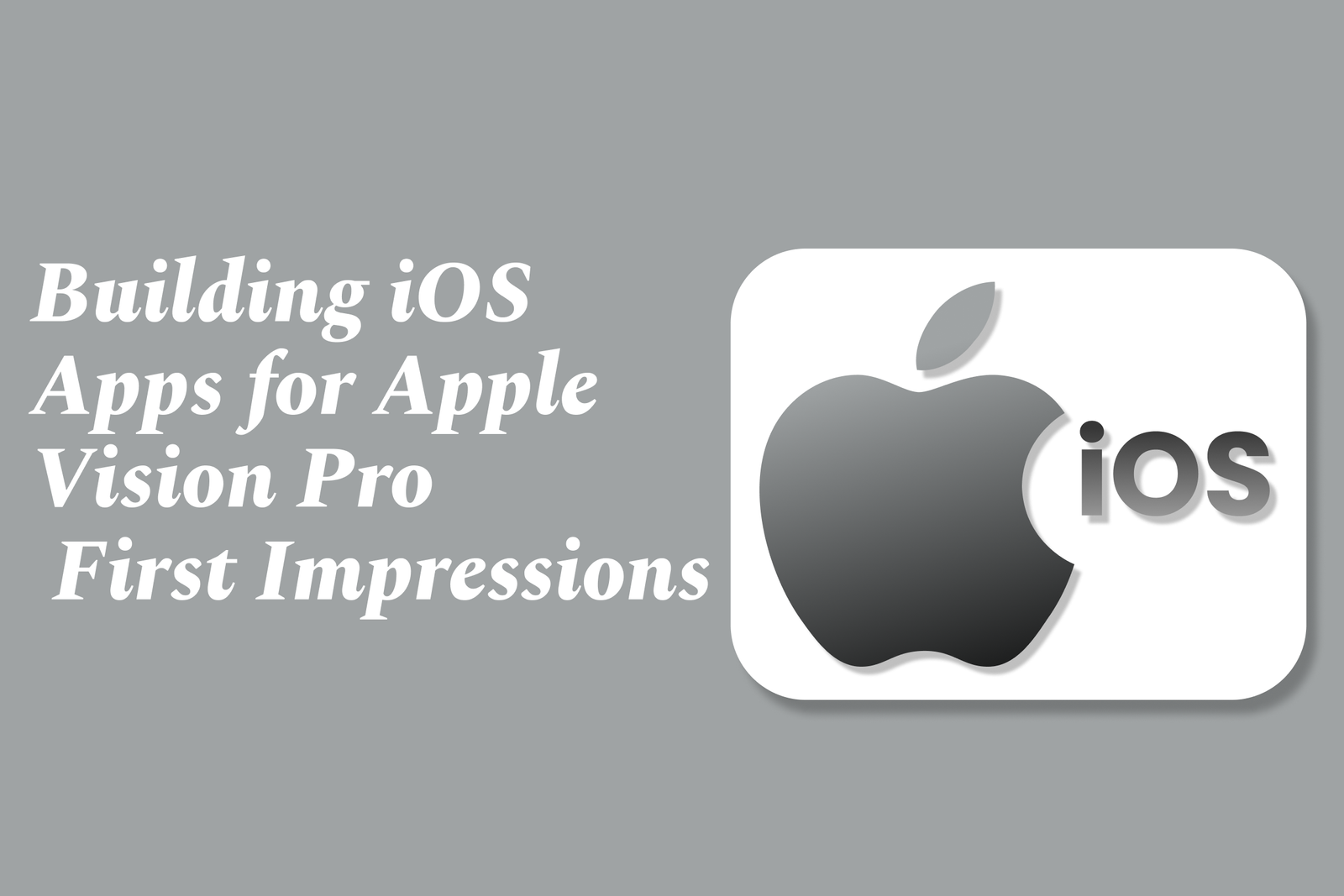Building iOS Apps for Apple Vision Pro: First Impressions
Building iOS apps for Apple Vision Pro introduces developers to a spatial computing platform combining eye tracking, hand gestures, and immersive UI. Early impressions highlight its intuitive controls and immersive experience, opening new possibilities despite current hardware and price challenges.
Building iOS Apps for Apple Vision Pro: First Impressions
1 ) Overview of Apple Vision Pro Experience
The Apple Vision Pro headset, showcased at WWDC 2023, is an advanced mixed reality device priced at $3,500, representing Apple's first major foray into spatial computing.
The device impresses with immersive technology that combines eye tracking, hand gestures, and voice input, delivering an experience reminiscent of the original iPhone’s revolutionary launch.
Though the software and apps remain in early development, the promise of Vision Pro as a new major Apple platform alongside macOS and iOS is clear.
2 ) Hardware and Setup Insights
Vision Pro features an array of cameras, sensors, and microphones including lidar and IR systems to track environment, eyes, and hands with precision.
Users requiring vision correction can purchase custom lens inserts based on prescriptions, which Apple measures using specialized equipment during setup.
The device requires a facial and ear scan to fit the light seal and calibrate spatial audio, ensuring personalized comfort and experience.
Despite advanced components, the headset feels somewhat heavy and front heavy but not uncomfortable during short use sessions.
3 ) User Interface and Interaction Paradigm
The UI employs a futuristic interaction combining eye focus with subtle finger pinches for selection, avoiding tiresome large hand movements.
Accuracy depends on steady eye focus during input, enabling users to navigate and click faster than traditional touch or mouse inputs once proficiency is gained.
Floating app windows provide a highly practical and intuitive multitasking environment, with multiple apps like FaceTime, browsers, and media players coexisting seamlessly in 3D space.
4 ) Media and Content Consumption
Vision Pro excels at delivering immersive 3D video and live performances, with spatial audio enhancing the realism.
Some experiences, like live music performances, convey strong emotional impact and feel close to being physically present.
While the headset provides a large virtual display for movies and TV, image clarity does not yet match top tier OLED TVs, possibly due to current display tech or headset fit.
5 ) Market Position and Future Potential
The high entry price positions Vision Pro as a pro or enthusiast device initially, with early adopter sales expected to meet supply despite the cost.
Apple’s approach focuses on spatial computing and individual app experiences rather than metaverse style shared virtual worlds.
The hardware and OS setup lay a strong foundation for developers to innovate, and Vision Pro likely marks the beginning of a long term platform evolution.
While initial public adoption may be limited by price and form factor, the technology represents a significant step toward mainstream augmented reality applications.
6 ) Developer and Ecosystem Implications
VisionOS and developer tools released next year will reveal which new applications and interaction models become compelling.
Existing iOS and Mac developers can anticipate a new spatial computing environment requiring novel UI approaches utilizing eye and hand tracking.
Apple's emphasis on familiar use cases like media, productivity, and communication aims to ease user transition to this new platform while maintaining broad appeal.
Summary: Apple Vision Pro blends cutting edge hardware and innovative interaction techniques to create a compelling spatial computing platform. Early impressions highlight exceptional immersion and intuitive control, balanced against current hardware limitations and high cost. This device heralds a significant new chapter for app developers willing to explore spatial UI paradigms and lays the groundwork for future evolution in augmented reality on Apple devices.
https://justacademy.in/news-detail/flutter-global-summit-updates
https://justacademy.in/news-detail/react-native?s-latest-animation-libraries-will-blow-your-mind
https://justacademy.in/news-detail/android-health-and-fitness-app-updates
https://justacademy.in/news-detail/flutter-for-startups:-quick-mvp-building-guide
https://justacademy.in/news-detail/android-launchers-with-new-capabilities
Related Posts
Java supports GDPR and data privacy by enabling secure data handling through encryption, controlled access, and precise data management. It allows developers to minimize PII exposure, ensure data confidentiality, and design workflows that comply with data protection regulations effectively.
Java code quality tools have evolved to include advanced static analysis, integrated security checks, and AI-powered code reviews. These updates help developers detect bugs, enforce coding standards, and enhance security, streamlining the development process and improving overall code reliability.
Java remains a cornerstone in big tech companies, evolving with modern features like records, pattern matching, and virtual threads. Its robust ecosystem, enhanced performance, and growing AI integrations keep it vital for both legacy systems and innovative new projects.
Java and CI/CD pipeline optimizations streamline Java application development by automating builds, tests, and deployments. They improve efficiency through parallelization, caching, and secure secrets management, enabling faster feedback loops and more reliable, scalable software delivery.
Java supports modern cryptography standards through its flexible Java Cryptography Architecture (JCA), enabling integration of advanced algorithms like AES, EdDSA, and post-quantum tools. Libraries like Bouncy Castle offer FIPS-certified, hardware-accelerated implementations for secure development.
Java 23 enhances record patterns by enabling concise, direct destructuring of record components within pattern matching, simplifying type checks and data extraction. This improvement boosts code readability and expressiveness by reducing boilerplate in handling immutable data classes.
Java remains a top choice for mobile app backends, powering scalable, secure, and high-performance server-side solutions. Latest trends include cloud-native microservices, reactive programming, and enhanced JVM optimizations, enabling efficient, flexible, and robust mobile backend development.
Java SE 24 and LTS Java SE 21 offer enhanced features and performance, while Apache Spark 4.0.0 introduces Scala 2.13 support and advanced ML and SQL capabilities. Together, they empower developers to build scalable, high-performance data applications with modern tools.
JUnit 5 modernizes Java testing with a modular architecture, improved assertions, and seamless Java 8+ support. Beyond JUnit, tools like Mockito and AssertJ enhance mocking and assertions, creating a powerful, flexible ecosystem for writing clean, efficient Java unit tests.
Java plays a pivotal role in cloud automation tools by providing a robust, platform-independent language used to build scalable automation frameworks like Jenkins and Selenium, enabling efficient CI/CD pipelines, testing, and orchestration across diverse cloud environments.










